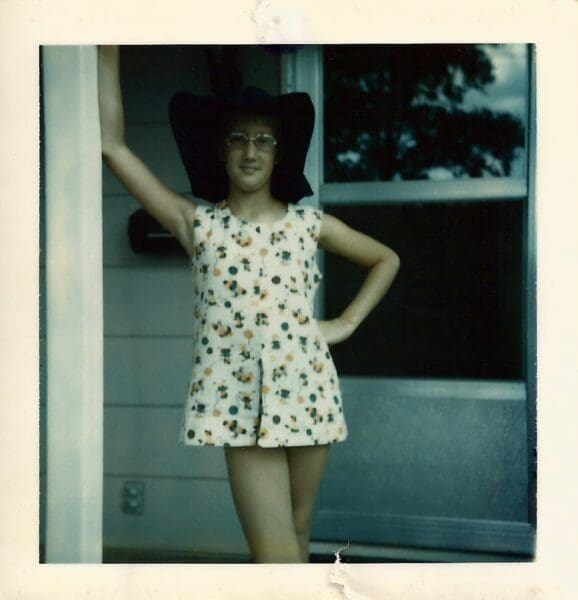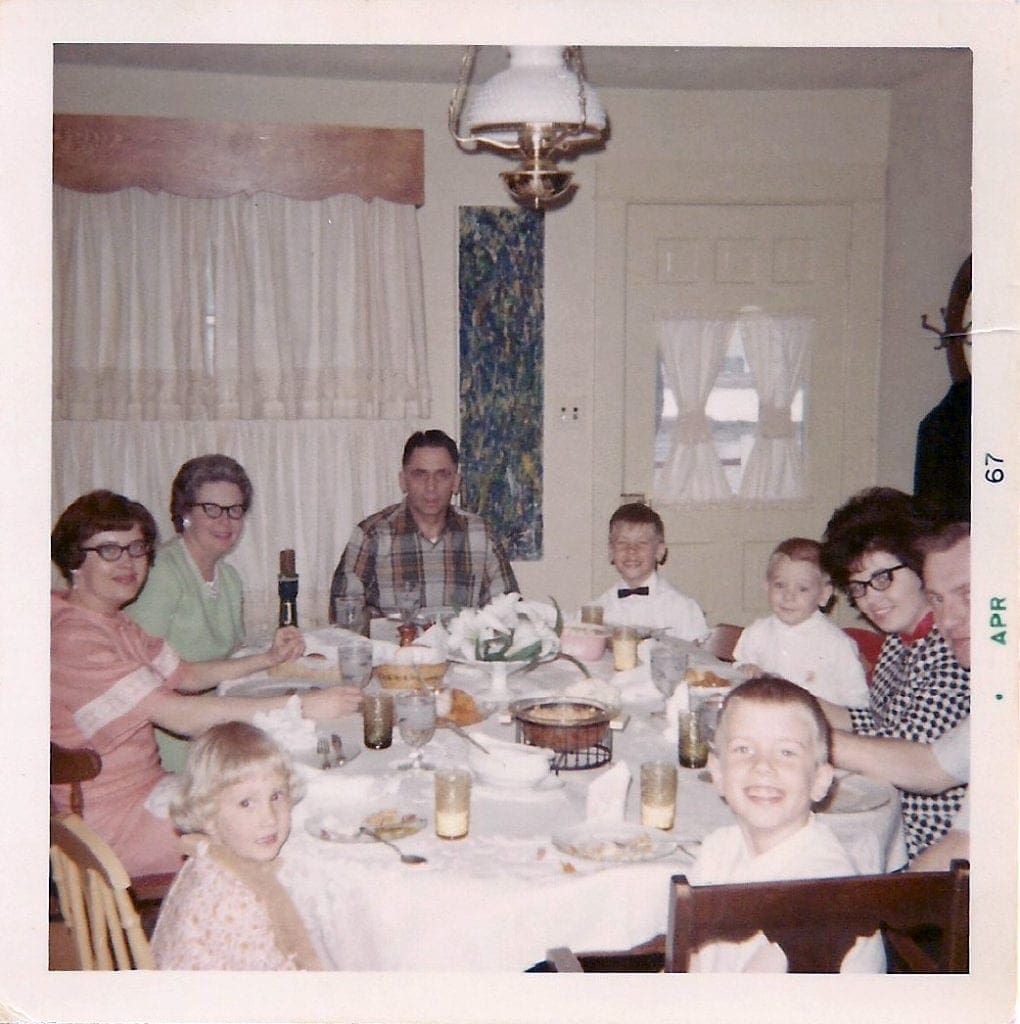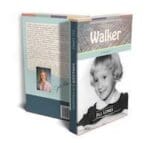Northern Wisconsin is a hotbed of people who are handy and good at crafts, and my parents were champs. I remember pulling over along a roadside somewhere because my mother had spotted cattails that hadn’t yet exploded and gone to seed. We had those cattails as part of a decoration in our house for many years. I still think of her when I see fresh cattails somewhere. She once made a light for over our cabin’s kitchen table by painting a pattern on a cardboard ice cream bucket and cutting out little triangles for the light to shine through. Very crafty.
My dad was skilled like this too. One day, when the high school was upgrading to newer instruments, I watched my Dad unload a couple of old drums, a saxophone and a clarinet from the back of our station wagon. With a clump of grapes falling from its bell (which later on, the family teased my mother about mercilessly), the saxophone looked sharp hanging on the dining room wall next to the clarinet. And the heavy old drums, my dad converted into coffee tables. I have one in my living room right now and it still gets lots of compliments.
As a kid, I wore a lot of clothes my mother sewed for me. Seldom were they pink, as my mother didn’t care for that color. Some of my earliest memories are of Pete mocking me for crying and complaining, “It itches!” A yellow-and-black plaid wool dress comes to mind that I wore in second grade. (Today we have Smartwool, but back then we only had wool-wool.) Plus, my mother’s technique for capping short sleeves with elastic—to get a nice poof—was to wrap the elastic around my arm to get the length right, and then make it a half-inch shorter. There was a lot of elastic used and all of it bit into me.
From the time she was young, my mother sewed her own clothes. She had been active in 4-H growing up, as were my brothers and me, and received many accolades for the quality of her work. She went to the State Dress Review in eighth grade, disappointed that she’d won on a simple cotton shirtwaist. She wished she’d won when she was older and could have sewn something more challenging. You only got to go to Milwaukee for the Dress Review one time.
At 18 she won a trip to Chicago for 4-H Club Congress. That’s a six-hour road trip on today’s roads. Back then, that was a lot of hours on a train and a bus. Plus, she was chosen for the Wisconsin Home Economics Award—not just for sewing or canning, but overall home economics. It was the highest honor a girl could receive, with one candidate chosen from each state.
Both exciting and scary, they stayed in the ritzy downtown Hilton and dressed in their best attire, complete with hats, for various elaborate banquets and affairs. There was much sewing in preparation for the trip and my mother had a wonderful time. At one dinner, held on top of the Sears Building and attended by the executive’s wives, they were served Cornish hens, which my mother and most of the rest of the girls had never eaten before.
“It’s a shame,” my mother commented, “they had to kill those baby chickens.”
The wife of the Sears president, who was sitting at her table, carried on seamlessly without a comment. As my mother recalls the scene, realizing in hindsight how the woman must have wanted to laugh out loud, she thinks, ‘God bless her.’
The apple doesn’t fall far from the tree, and I would go on to sew most of my own clothes while in high school. (Without thinking, I once told a hairdresser to trim off five-eighths of an inch, a standard unit of measure for sewing seams. “Excuse me?”she’d said.) I sewed on an Elna sewing machine my mother had won years before in a sewing competition sponsored by Herberger’s, an area department store. Twenty or so years later, when I was in high school, Herberger’s would host another sewing contest. My mother worked hard at sewing a special outfit for the competition, but in the end, unsatisfied with the results, submitted a long gray windowpane wool winter coat she had previously made for her own use. And of course, she won again.
I was taught to sew the summer before fifth grade, by Don Ruedy’s first wife Elaine, who was an excellent seamstress and also a schoolteacher. Down the road, after she and her husband divorced, rather than become a Miss again midlife, she would introduce herself to her English classes as Ms. Ruedy. That was the first time any of us—like, in all of Rice Lake—had heard this title. She was a trailblazer, that one.

I started out by learning to sew Barbie doll clothes. By then I was too old to play with Barbie dolls, but still, it was fun making those tiny little outfits. It’s telling, though, that I was taught to sew by someone other than my mother. Admittedly, my mother worked fulltime for nearly all of my life. First she was a secretary in various places, moving on to become an owner of an H&R Block and eventually being elected County Treasurer, a position she held from the time I was in high school until the day she retired. She’s a very bright woman and I am sure she was very good at what she did.
But we were not close, my mother and me. In fairness, I wasn’t close with my father either. Or my brothers, for that matter. The boys were a pair and I always felt I was odd man out, so to speak. It was always “the boys and Jill.” One way I tried to get close to my mother was by falling asleep on her bed while she sewed on the other side of the room. The sound of the old Elna humming away was soothing to me, and I was near her but not too close.
Another option was to slide into the gap between the counter and refrigerator while she cooked. Decades later, while attending a poetry retreat, I found myself being shoed from the kitchen by the chef, Julie, who’d requested we not be in there while she was making a meal. That surfaced an old memory, and I wrote this:
Tucked
I want to be under your feet
In the kitchen
I know you don’t really
Want me there
But I can’t leave
It’s the only way I know
To get close to you
I squeeze into that space
Between the fridge and counter
You bark at me to get out of
Even there
What am I hurting there?
No one else wants this space
I tuck myself away
I’m near
But you can’t get me
To throw me away
I’m not hiding there
I’m finding
A way to be close to you
And not get bit
Often, my mom shooed me out the kitchen and into my dad’s lap, who was trying to read the paper and have a drink after work. I remember reading books while sitting with him, and him correcting me on the words “often”—you don’t say the “t”—and “toward”—it’s one syllable, with the “w” silent.
All of that gathering and singing we did with other young families often involved drinking for the grown-ups. More than once, there were fights in the kitchen late at night. I would sit on the stairs in Barron and listen for the one who sounded less angry and call out for that parent. It was frightening.
Looking back, then, I can see how the dysfunctional threads of my dad’s developing alcoholism were winding their way into our lives from the get-go. And a family can only roll with so much before the tapestry starts to unravel and we choke on all those frayed edges. The drinking was a snowballing problem that fast gained momentum and by the time we moved from Barron to Rice Lake during the summer of 1971, between my second and third-grade years, it was turning into an avalanche.
Less easy to see at the time, but not so difficult to find when viewing one’s life in the rearview mirror, were the matching dysfunctions that my mother brought to the table. To be overly controlling doesn’t sound as damning or dramatic as to be an alcoholic, but the invisible marks it left were no less problematic, and maybe more so. I don’t remember receiving warmth from her when we lived in Barron, but I remember her getting colder and being harder to be around when we lived in Rice Lake.
When we lived in Barron, my mother, then herself a young mother of three young children, and not one to have received a lot of warmth and connection herself along the way, was doing her best to excel at what women were expected to do in those days. As part of the rotation, she would have the families of my dad’s brothers and sister’s to our house for a holiday meal, like at Christmas or Easter, cooking a turkey and setting a big table with the good china.

On the first occasion, she was caught unawares by those pesky giblets packaged inside the bird, which didn’t get retrieved until my Aunt Norma found them after the turkey had been cooked. But everyone lived. Over the years, my mom has mastered the art of cooking and has routinely put on an amazing spread for the whole family. It’s a tremendous amount of work and she makes it look easy. Some years, though, the fracturing of our family has made it hard to enjoy.
When we were little, she was also a member of a women’s group, the Barron Federated Music Club, which from time to time would meet at our house. On those evenings, we were fed a special dinner of something we really liked—either chicken potpies or Salisbury steak TV dinners—and got to eat on tray tables upstairs. But we had to promise we would not make a sound. We were told to tiptoe and not talk, so we wouldn’t disturb the meeting.
On one occasion, Dad wasn’t there for some reason, and I had developed an earache. When I later went to the doctor and they flushed my ear with water, a surprising amount of sand poured out. On that evening, I was in quite a lot of pain. So much so that I finally had to creep down the stairs and whisper for my mother. She was mortified, of course, but more noticeably, the women were shocked. They’d had no idea anybody was home!
[Addendum of Sorts, from my mom: Jill was an excellent seamstress and made all, or at least most, of her own clothing when she was a teenager. Ms. Ruedy was a good friend. She and Jill did some fun sewing together. At home I know I was often not very patient when Jill was sewing. She wanted to be told what to do, but yet didn’t want to be told. (She was definitely a bright, independent kid.) I’d often show her how, then tell her to read the pattern after she continually called to me, “What do I do now?” This changed after Jeff sewed his own ski vest. A little sibling rivalry brings out the best sometimes. I was very proud of her. I’m sorry she didn’t know that. She went on to sew many fairly complicated outfits, some of which are still hanging in my ‘off season’ closet.]
{Jill here again. This is both fascinating and painful. I had thought about mentioning the ski vest that Jeff sewed, but decided to leave it alone. I would have said that my mother hurt my feelings deeply when she bragged for weeks to everyone we knew about the marvelous vest Jeff had made, yet never mentioned my sewing accomplishments.
I can only vaguely recall that I pestered her for help, and imagine I was doing it as a way—annoying, yes, but a way—to connect with her. I suspect that the more she tried to squelch my pleas for assistance, the more I felt rejected and therefore kept it up. For her, her strategy of complimenting Jeff’s sewing success seemed to have worked: I stopped bothering her. For me, I clearly recall how much she hurt my feelings by doing that, which I covered over with hate. And so it went.}
Next Chapter
Return to Walker Contents



